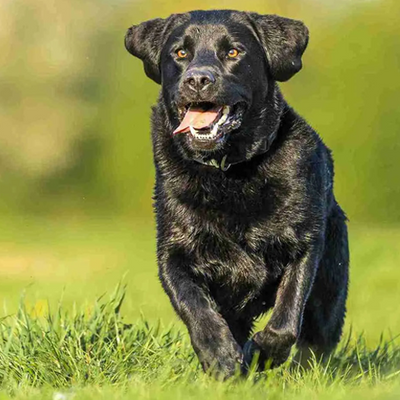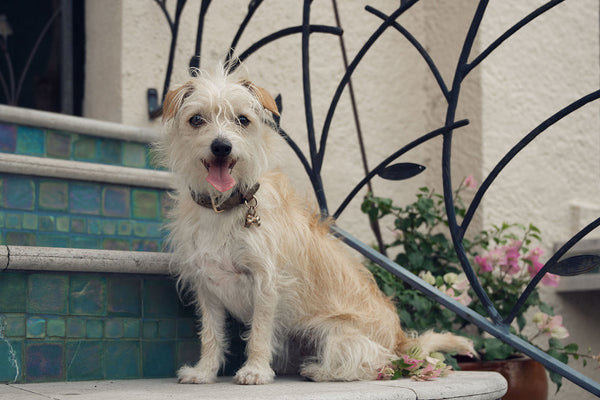Bernedoodle
Bernedoodle
America’s Playful and Family-Friendly Giant
1. Introduction to the Breed
The Bernedoodle, a delightful cross between a Bernese Mountain Dog and a Poodle, ranks among America’s top mixed dog breeds in 2025, cherished for its playful energy and family-friendly nature. Known for their intelligence, gentle temperament, and low-shedding coat, Bernedoodles are ideal for families or active owners seeking a loyal, hypoallergenic companion. Their fluffy fur and affectionate demeanor make them perfect for suburban homes or spacious apartments, bringing warmth and joy to any household.
2. History of the Breed
Developed in the United States in the early 2000s, the Bernedoodle was bred to combine the Bernese Mountain Dog’s gentle loyalty with the Poodle’s low-shedding coat and intelligence. Gaining popularity for their versatility as family pets and therapy dogs, Bernedoodles have been refined by American breeders to offer consistent sizes and temperaments. While not recognized as a purebred by the American Kennel Club (AKC), their charming blend of traits has made them a beloved choice across the U.S. for their adaptability and warmth.
Fun Facts
- Gentle Giants: Bernedoodles often inherit the Bernese Mountain Dog’s calm, nurturing nature, making them great with kids and pets.
- Coat Options: Their coats range from curly to wavy, offering low-shedding qualities ideal for allergy sufferers.
- Size Variety: Available in standard (50–90 lbs), medium (30–50 lbs), and miniature (10–30 lbs) sizes, they suit diverse homes.
- Therapy Stars: Their empathetic nature makes Bernedoodles popular as therapy or emotional support dogs in the U.S.
3. Physical Characteristics
- Typical Size and Weight: Bernedoodles vary, with standards standing 23–29 inches tall and weighing 50–90 pounds, mediums at 20–26 inches and 30–50 pounds, and miniatures at 12–17 inches and 10–30 pounds.
- Coat and Color: Their low-shedding coat is curly or wavy, in colors like black, white, tri-color, or merle patterns, requiring regular grooming to prevent matting. Check out our American-made pet grooming products for the perfect brush, comb or rake.
- Distinctive Features: Bernedoodles have expressive, dark eyes (often brown), floppy ears, and a sturdy yet elegant build, with a bushy tail that enhances their friendly appearance.
4. Personality Traits
Bernedoodles are playful, intelligent, and affectionate, blending the Bernese Mountain Dog’s gentle loyalty with the Poodle’s cleverness, making them ideal family or therapy dogs. They thrive on interaction, getting along well with children, pets, and strangers, though their energy requires engagement to prevent boredom. Their eager-to-please nature makes them highly trainable, but they may chew or become vocal if under-stimulated. Bernedoodles suit active owners who can provide attention and playtime, offering unwavering devotion and warmth.
5. Care Requirements
- Exercise Needs: Bernedoodles need 45–60 minutes of daily activity, such as walks, fetch, or hiking, to satisfy their energy and prevent restlessness.
- Grooming Needs: Their curly or wavy coat requires brushing 2–3 times weekly and professional grooming every 6–8 weeks, plus ear cleaning, using American-made grooming products from libertypaw.com.
- Dietary Considerations: A high-protein diet supports their active lifestyle, with portion control to avoid obesity; American-made kibble from libertypaw.com promotes coat health.
6. Health and Lifespan
Bernedoodles live an average of 12–15 years, with potential health issues including hip dysplasia, elbow dysplasia, and bloat due to their Bernese heritage. Regular vet checkups, a balanced diet, and weight management reduce risks, while genetic screening from reputable breeders can detect issues like von Willebrand’s disease or progressive retinal atrophy (PRA). Owners should monitor for limping, digestive issues, or skin irritation and use American-made grooming supplies from libertypaw.com to maintain coat and skin health, ensuring a vibrant life.
7. Training and Socialization
Bernedoodles are highly trainable, excelling at commands like “sit,” “stay,” or “come” with positive reinforcement using treats or play, available from libertypaw.com. Early socialization with people, pets, and new settings fosters their friendly demeanor, reducing shyness or overexcitement. Consistent boundaries curb playful behaviors like chewing or jumping, while puzzle toys engage their sharp minds. Their intelligence and eagerness to please make training fun, ensuring they adapt well to family life or public environments.
8. Ideal Home Environment
Bernedoodles thrive in active, spacious homes, from suburban houses with yards to apartments with regular walks, as long as owners provide interaction and exercise. They suit families or individuals who enjoy bonding and playtime, with American-made toys and beds from libertypaw.com enhancing comfort. Secure spaces for running or fetch meet their energy needs, while cozy indoor spots cater to their love for cuddling, creating a balanced, happy environment for their gentle nature.
9. What’s the Best Toy for My Bernedoodle?
Bernedoodles love toys that match their playful, intelligent nature, and libertypaw.com offers American-made options to keep them engaged. Durable rope toys for tug-of-war provide 20–30 minutes of exercise, strengthening jaws and bonding with owners. Squeaky plush toys for fetch satisfy their retrieving instincts for 15–20 minute sessions, with supervision to prevent tearing. Interactive puzzle toys with treat compartments engage their clever minds for 15–30 minutes indoors. Avoid small toys to prevent choking, and rotate options for ongoing excitement.
10. Adoption and Breeder Tips
Choose Bernedoodle breeders affiliated with organizations like the Bernedoodle Association, ensuring health clearances for hips, elbows, eyes, and digestive conditions. Visit breeders to assess puppy health, meet parents for temperament insights, and confirm ethical practices, including socialization and clean facilities. Rescues, such as Bernedoodle-specific groups or local shelters, offer adoptable dogs with known histories, ideal for adoption-minded owners. Avoid unregulated breeders, and ask about genetic testing and activity needs to ensure a healthy, well-adjusted Bernedoodle.






0 comments